- +86-19857418482
- info@chinese-surfing.com
In terms of meaning single Chinese characters can be divided into two types: pictographic script and self-explanatory character.
The pictographic script of Chinese characters refers to their original forms that were based on pictures of objects. These early characters were directly inspired by the shapes and appearances of real-world objects or concepts they represented. Over time, these pictographic elements evolved into more abstract and stylized forms that still retain traces of their original pictorial origins. This evolution reflects the rich history and cultural development of Chinese writing, which has fascinated scholars and learners alike for centuries. Today, in this article, let's find out the beauty of Chinese pictographic scripts.
Pictographic scripts are simple drawings representing people or objects referred to. They are derived from pictures of natural phenomena, people, human features, animals, plants, and tools of production or instruments for daily use that are easy to draw. In the process of the simplification and abstraction of scripts, however, renewed forms of the scripts are very different from what they had been made for the first time. There is a great difference between the inscriptions on ox bones or tortoise shells of ancient times and the modern regular Chinese scripts. As a matter of fact, the pictographic scripts have lost their original features and become pure written symbols.
There is only a small number of pictographic scripts, roughly making up 5% of the total Chinese characters. However, pictography is the basic method of Chinese writing and the foundation of Chinese formation. It is therefore important for learners to study them, so as to better understand the origin and structure of Chinese characters.
工, gōng, to work
For example:
工作, gong zuò, to work; job
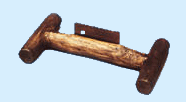

The ancient written form of 工 is in the shape of a tool, the character originally means tool, and has by extension come to mean “worker”.
古代汉字像古人使用的一种工具。本意是“工具”,引申为“做工的人”。

人, rén, man
For example:
工人, gong rén, worker


The ancient written form of 人 is in the shape of a man who is standing sideways.
古代汉字像一个侧面而立的男性形象。

女, nǚ, female
For example:
女人, nǚ rén, woman
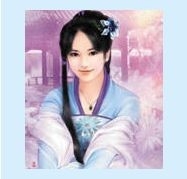

The ancient written form of 女 is in the shape of a woman who is going down on her knees with arms crossed at her breast.
古代汉字像一个双膝跪地、两手交叉于胸前的女子。

子, zǐ, son
For example:
子女, zǐ nǚ, sons and daughters


The ancient written form of 子 is like a baby with head, both arms stretching out and legs in his infancy.
古代汉字像一个有头有手,两臂张开,两腿裹在襁褓之中的婴儿。

心, xīn, heart
For example:
中心, zhōng xīn, center
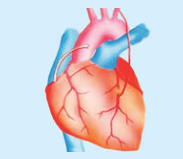

The ancient written form of 心 is like a heart.
古代汉字像一个心脏的形象。

门, mén, door
For example:
门口, mén kǒu, entrance
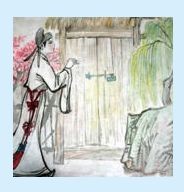

The ancient written form of 门 is in the shape of the two parts of a door.
古代汉字像两扇门的形状。

有, yǒu, to have
For example:
没有, méi yǒu, to have not
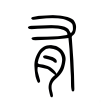

The ancient written form of 有 is in the shape of a hand with a slice of meat. Thus it symbolizes “have”. The lower component of 有 is similar to 月 except is first stroke is a vertical.
古代汉字像一只手拿着一块肉,表示“持有”。“有”中的“月”第一笔撇变竖。

The development of Chinese characters into a complex writing system involved the gradual incorporation of phonetic and semantic components, further enriching their versatility. Despite these advancements, the influence of pictographic origins remains palpable, reminding readers of the deep roots and enduring legacy of Chinese writing.
In contemporary times, while technological advancements and modernization have transformed communication, Chinese characters continue to be cherished for their aesthetic appeal and historical significance. Learning about their pictographic origins not only deepens one's understanding of the language but also provides a profound connection to China's cultural heritage.
If you are obsessed with the beauty of Chinese characters and want to learn more about Chinese, welcome to contact Chinese Surfing. As a professional Chinese learning center, we offer online classes for Chinese language and Off-line classes. Our intensive courses include the HSK1 course, HSK2 course, HSK3 course, HSK4 course, HSK5, and HSK6 course, covering Chinese learners at different stages. According to the practical language application needs, we have launched an intensive Chinese course, business Chinese classes, Chinese speaking course, and a Chinese Summer Course.
Chinese Surfing is located in Hangzhou, the cultural capital city of China. If you happen to be in China, especially in Hangzhou, for tourism, studying, or work, and you're planning to learn Chinese, Chinese Surfing is a reliable choice. In addition to learning Chinese in Hangzhou, you can also join our offline team-building activities to experience the natural beauty of China and immerse yourself in Chinese culture.
Related Chinese Language Learning from Chinese Surfing
Latest Blogs about Chinese Surfing